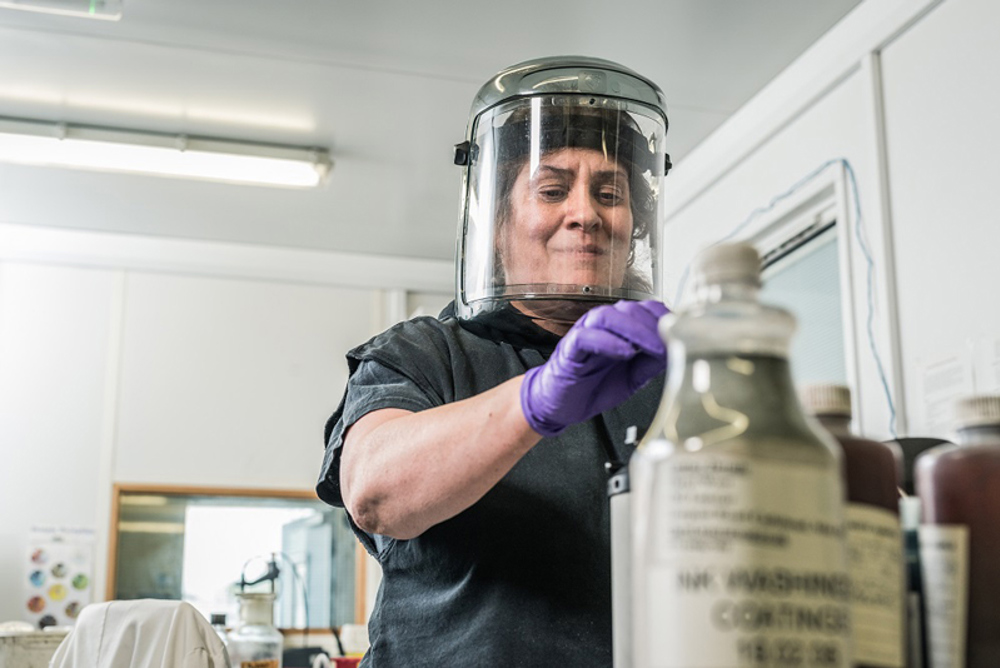Liquid waste
Good for our planet, good for our customers
Services offered
GENeco provides cost-effective and sustainable liquid waste solutions for domestic and industrial producers.
We have 11 liquid waste treatment centres across the south west of England including Dorset, Somerset, Bristol, most of Wiltshire and parts of Gloucestershire and Hampshire which provide accessible and environmentally-friendly treatment of various wastes including hazardous and non-hazardous liquids.
The end products of our innovative zero waste to landfill treatment process include renewable energy, grey water for industrial use, and nutrient-rich biofertilisers.
"We provide our customers with a safe and compliant service to meet their needs. We work hard to use our knowledge and expertise to resolve customers' environmental issues."
How can we help you?
We pride ourselves on our customer service and endeavour to work collaboratively with our customers to offer advice, competitive pricing and rapid turnaround times.
Our experienced staff are committed to making the process from booking to delivery as smooth as possible, and our on-site team work hard to make your experience easy and efficient.
We are continually developing our customer experience through your feedback and are dedicated to staying in touch via regular newsletters, social media channels and in person.
Why recycle
Since 2010 Environmental Agency regulations mean liquid waste can no longer be accepted into landfill sites. By law all liquid waste streams must be treated appropriately before discharge into watercourses, including sewers.
The service we offer gives our customers peace of mind that the disposal of their waste is compliant with legislation.
Liquid Waste Accepted
Our accessible liquid waste treatment centres in the south-west can treat a variety of commercial and domestic wastes, including hazardous and non-hazardous liquids.

Types of waste we can accept include:
- Landfill leachate - Landfill leachate is generated by percolation of precipitation through the waste accumulated in a landfill site. It varies in composition and commonly contains ammonia and trace heavy metals and is a waste stream that we regularly accept.
- Farm and dairy waste - Liquid effluent and sludges resulting from the cleaning and wash down of farm apparatus and infrastructure can often be contaminated with animal waste or foul dairy products which can easily be treated at many of our treatment centres.
- Domestic waste - Septic tank waste, chemical toilets and cesspools are classed as domestic waste and are produced from a variety of different activities in the south-west and are treated at our sites, such as Glastonbury Festival.
- Industrial waste - Chemical and toxic wastes are produced by industrial activity, often in the form of solvents, paints and process effluents. These can be particularly hard to treat but are managed at GENeco's biggest treatment centre in Bristol.
- Hygeine and cleaning waste - Commercial cleaning contracts produce waste water that can contain foams, cosmetics and cleaning products. There are also particularly hard to treat but can be managed at Bristol Treatment Centre.
For a full list of EWC codes that we can treat at each site, please consult our liquid waste permits.
Process
Our zero waste to landfill process is one of the most sustainable treatment routes available to the UK market, offering the highest levels of compliance and helping to produce renewable energy that powers local homes.
Primary treatment - Once a liquid waste has been accepted for treatment, it undergoes preliminary treatment in the form of blending, neutralisation and rag and grit removal. This prepares the waste composite for primary sedimentation, whereby sludge is separated from the liquid portion.
Biological treatment - The liquid is the aerated for biological treatment; here micro-organisms in activated sludge break down the pathogens in the waste. Once final settlement has taken place, the final effluent is either put back into the water cycle or used as grey water in local industry.
Anaerobic digestion - The sludge is treated via a process called anaerobic digestion. For this, the waste sludge is pumped into digesters and kept 32 - 42°C at for 12 - 18 days. During this time, micro-organisms break down the biodegradable material in the absence of oxygen to produce methane-rich biogas, and digestate.
Closing the loop - The digestate is used as a nutrient rich- biofertiliser in agriculture; biogas is either upgraded to biomethane or used to generate renewable electricity.
